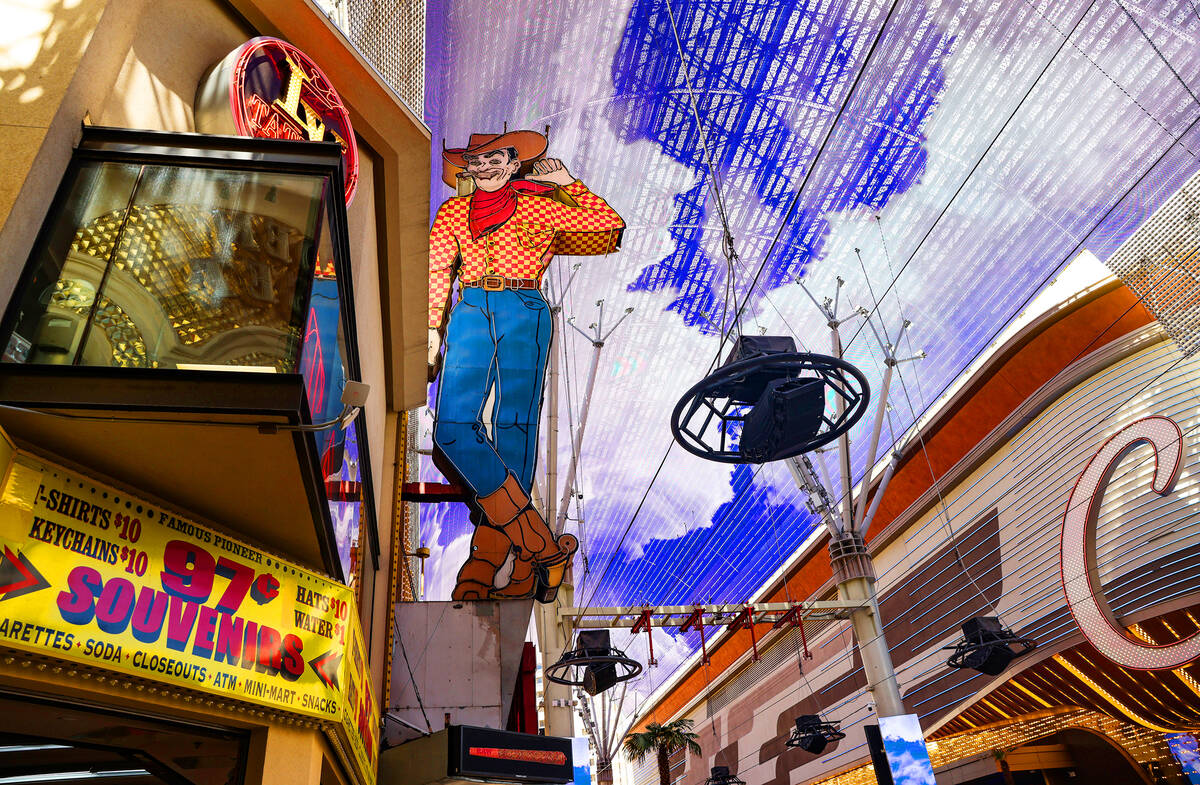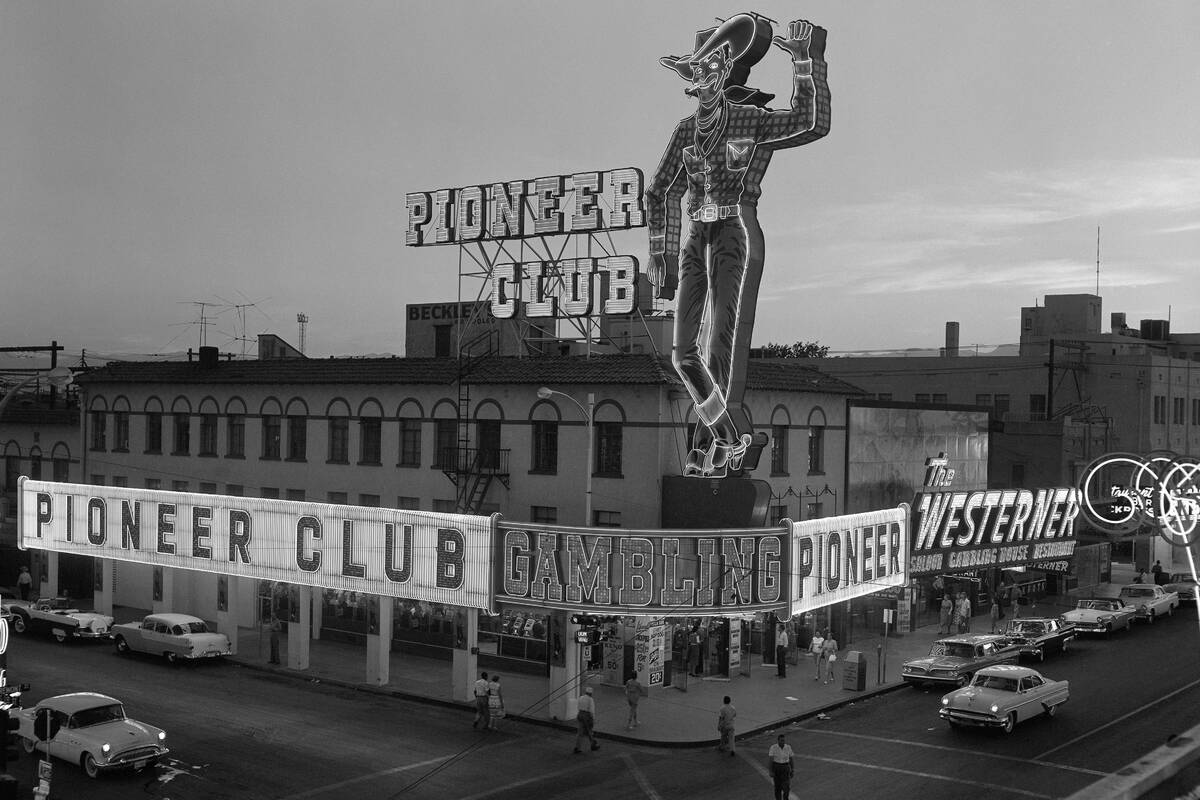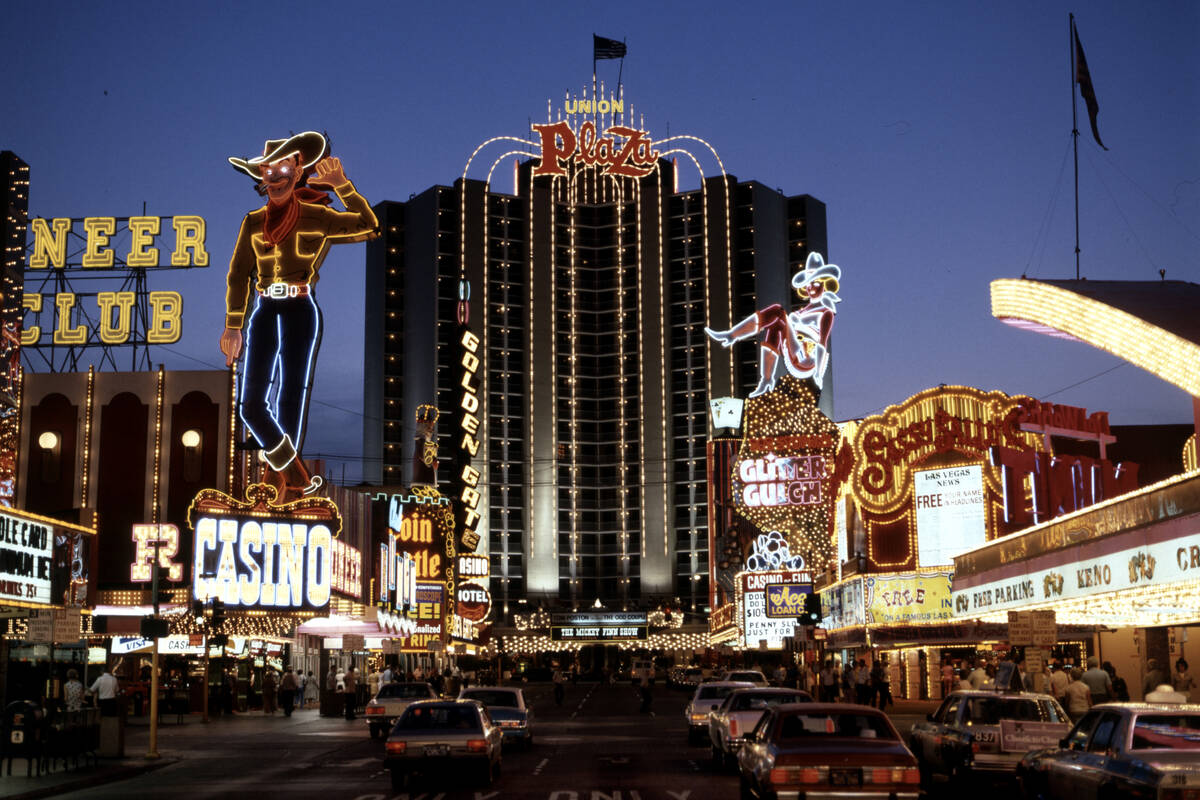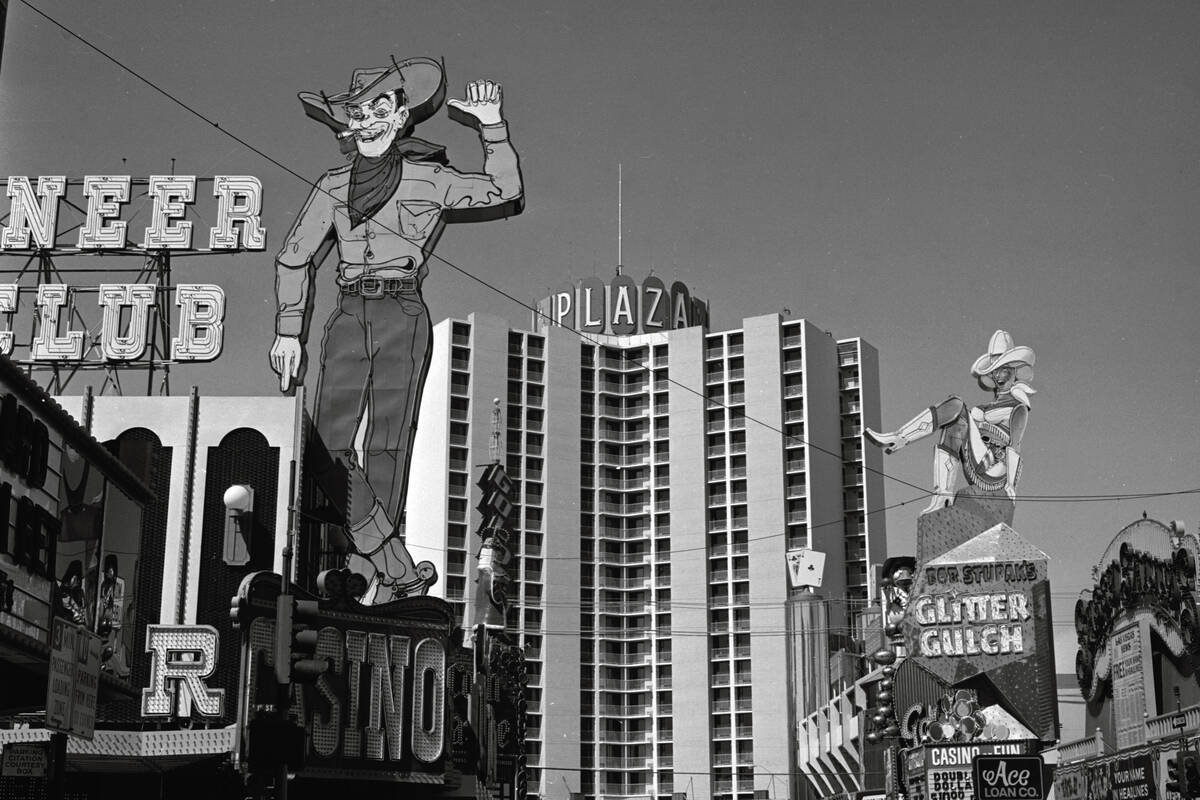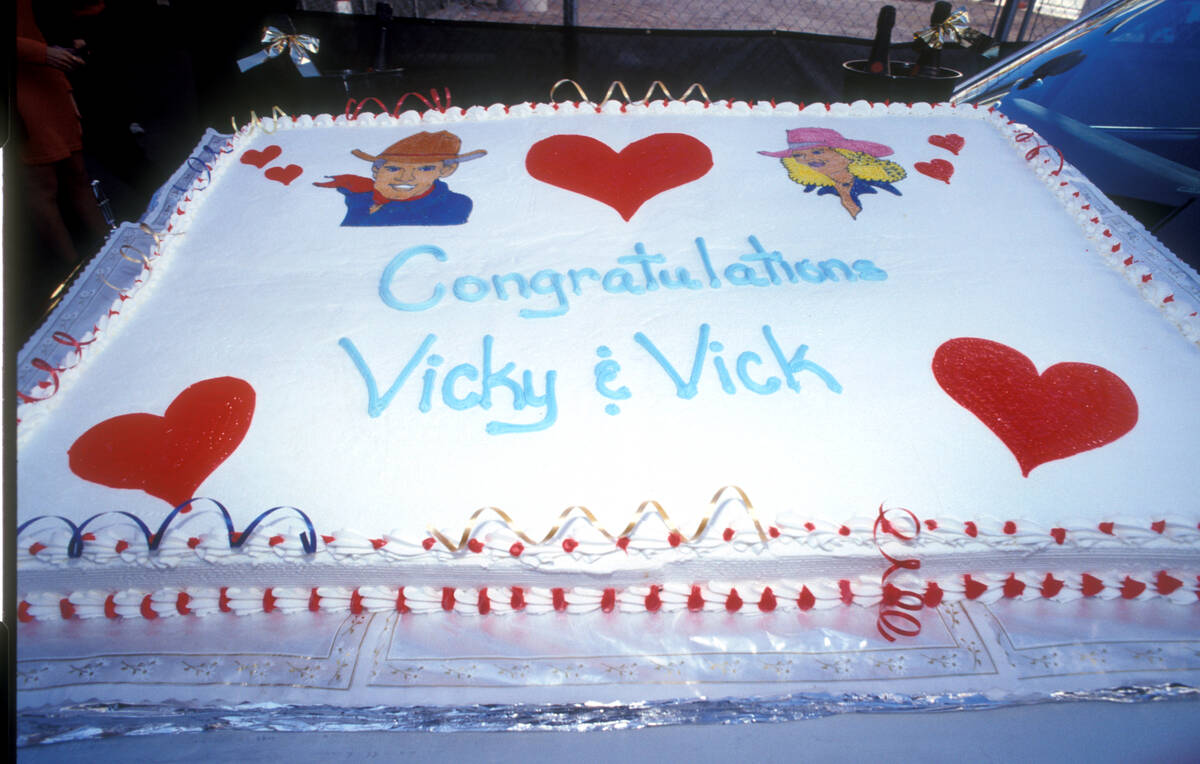Now 73, Vegas Vic offers proof that ‘legends never fade’
Vegas Vic, the iconic 40-foot-tall cowboy sign on Fremont Street is a nod to Las Vegas’ original vision, according to local historian Michael Green.
Green, who is also a UNLV professor and chair of the history department, said before Las Vegas became synonymous with things like gambling, casinos and mobsters, the city had a serious frontier connection and — gasp — connection to California.
“Here’s a little bit of history, or theorizing, when (Bugsy) Siegel opened the Flamingo (in 1946), it was an important turning point in the idea of creating the luxury hotel modeled on say something you would find on Miami Beach. Before that, Las Vegas very much promoted itself as a Western.”
Vegas Vic was originally erected outside of the Pioneer Club in Las Vegas in 1951, and Green said the Lowden family previously owned the sign. There is also a jazz club called Vic’s. In 1994, workers had to cut off part of Vic’s hat when the Fremont Street Experience was being built, and the sign is now owned by Schiff Enterprises.
Jeff Young, executive vice president of Yesco, which is doing a restoration of Vic (and previously worked on Vegas Vickie) said the cowboy has become iconic and synonymous with Las Vegas over the years.
“The 73-year-old Vegas Vic is living proof that legends never fade,” he said. “Keeping him looking sharp is our way of preserving the spirit of classic Las Vegas. Every time Vic tips his hat, it’s a reminder that the magic of neon never goes out of style.”
Green said that back in the early days of Las Vegas and the Strip, the city had a very different feel to it, a far cry from its mobster machinations and current glitz and glamour.
“You had the El Dorado, which started in the mid-1930s, and we all know about the (Las Vegas Days Parade), the rodeo. And the downtown casinos at that time all had names like the Northern Frontier, the Pioneer, and the El Rancho opened there in 1941 on the Strip, so they really had a Western theme that was still going on until the late 1940s and ’50s.”
A previous version of this story incorrectly reported what casino opened on the Strip in 1941.
Contact Patrick Blennerhassett at pblennerhassett@reviewjournal.com.




